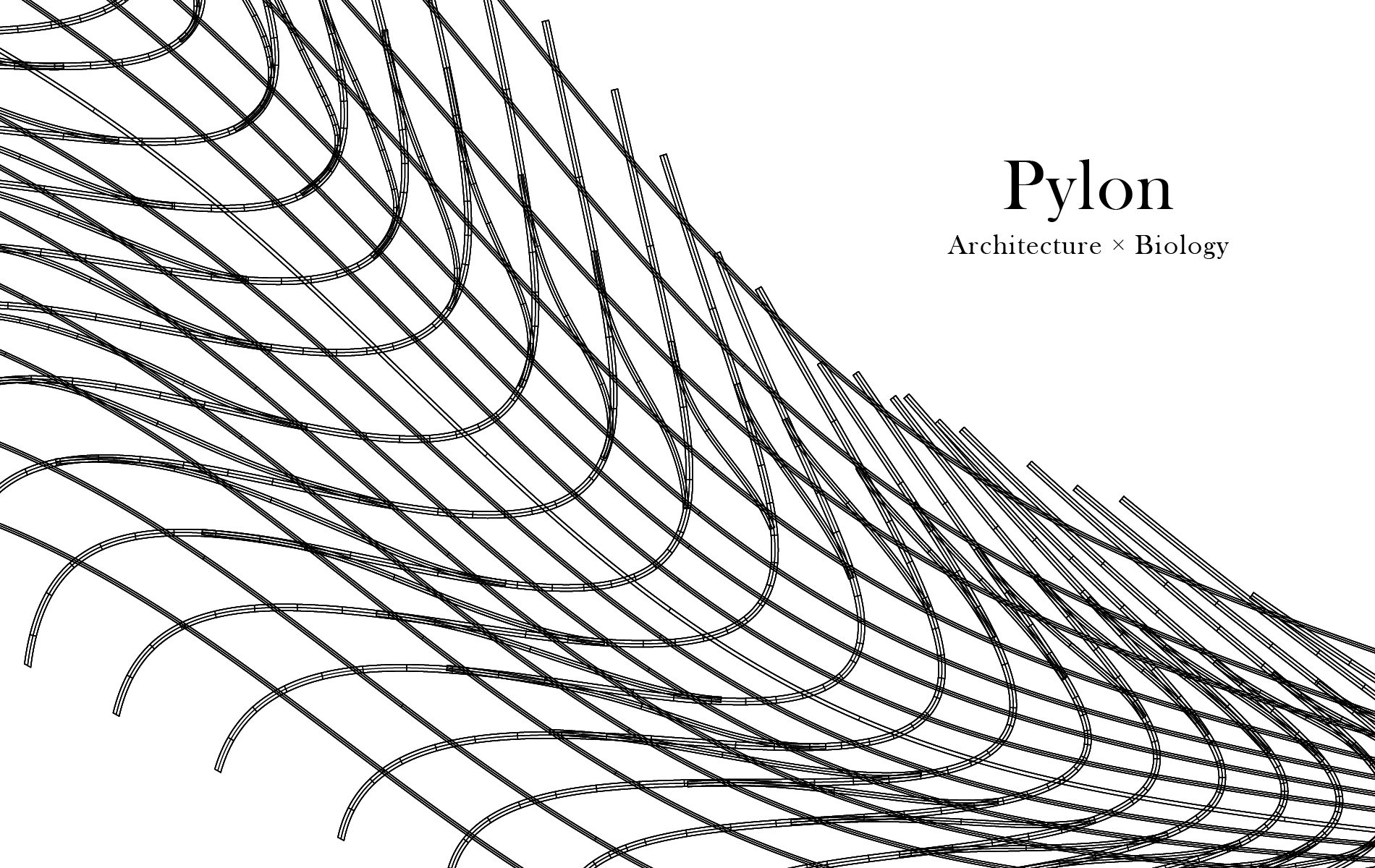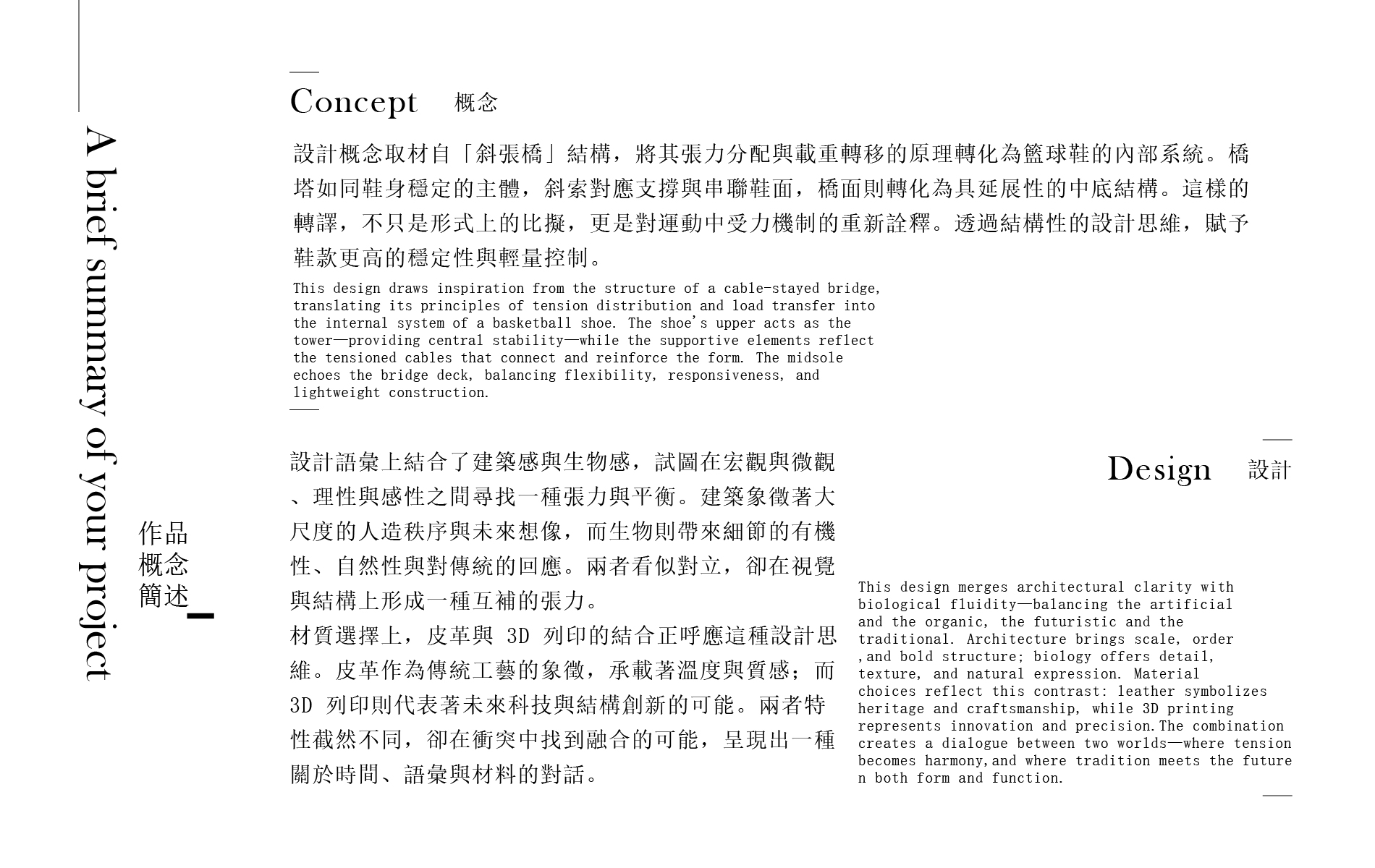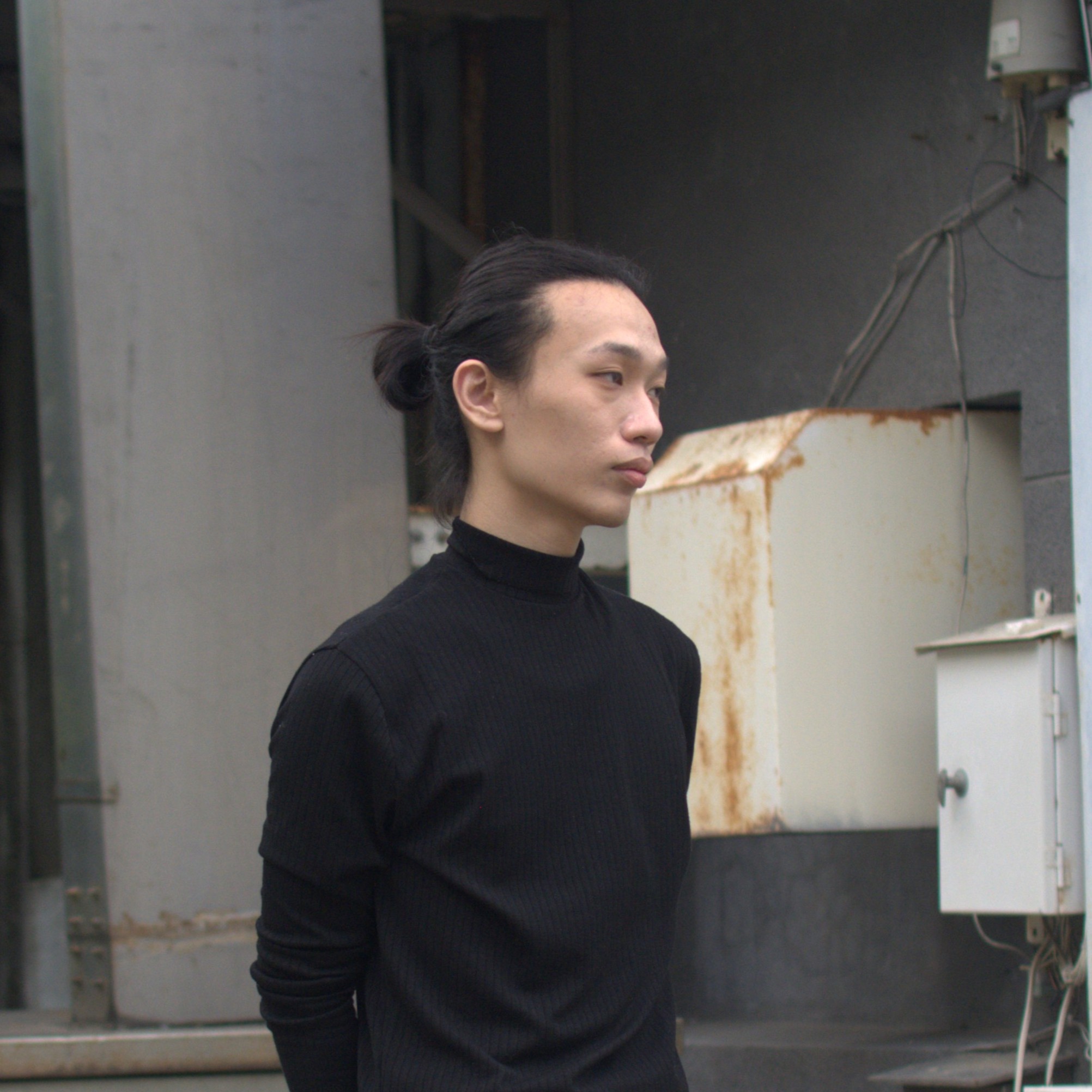Pylon
Category: Footwear
隨著籃球運動的競技性與觀賞性持續升高,球鞋早已不再只是功能性的保護裝備,而是直接影響球員動作、力量傳導與表現的結構核心。歷史上許多經典鞋款之所以被銘記,不單因為性能卓越,更在於它們勇於挑戰當下對「球鞋應該是什麼樣子」的想像,開創了全新的設計語境與結構邏輯。這些看似激進的創新,往往成為後續鞋款演進與技術延伸的起點。 設計概念取材自「斜張橋」結構,將其張力分配與載重轉移的原理轉化為籃球鞋的內部系統。橋塔如同鞋身穩定的主體,斜索對應支撐與串聯鞋面,橋面則轉化為具延展性的中底結構。這樣的轉譯,不只是形式上的比擬,更是對運動中受力機制的重新詮釋。透過結構性的設計思維,賦予鞋款更高的穩定性與輕量控制,同時也創造出具當代工程語彙的視覺風格,嘗試在美學與機能之間取得一種新的平衡。 設計語彙上結合了建築感與生物感,試圖在宏觀與微觀、理性與感性之間尋找一種張力與平衡。建築象徵著大尺度的人造秩序與未來想像,而生物則帶來細節的有機性、自然性與對傳統的回應。兩者看似對立,卻在視覺與結構上形成一種互補的張力。 材質選擇上,皮革與 3D 列印的結合正呼應這種設計思維。皮革作為傳統工藝的象徵,承載著溫度與質感;而 3D 列印則代表著未來科技與結構創新的可能。兩者特性截然不同,卻在衝突中找到融合的可能,呈現出一種關於時間、語彙與材料的對話。 As basketball continues to evolve in both competitiveness and entertainment value, footwear has become far more than just functional protection. Today, basketball shoes play a critical role in supporting movement, transferring force, and enhancing overall performance. Many iconic sneakers are remembered not only for their performance but for how they challenged conventional ideas of what a basketball shoe could be—opening up new design languages and structural possibilities. These bold innovations, though sometimes ahead of their time, often became the foundation for future development and technical evolution. This design draws inspiration from the structure of a cable-stayed bridge, translating its principles of tension distribution and load transfer into the internal system of a basketball shoe. The shoe's upper acts as the tower—providing central stability—while the supportive elements reflect the tensioned cables that connect and reinforce the form. The midsole echoes the bridge deck, balancing flexibility, responsiveness, and lightweight construction. This is more than a visual metaphor—it's a reinterpretation of how force moves through the body during play. By adopting a structural design approach, the shoe achieves greater stability and refined weight control, while also presenting a visual identity shaped by modern engineering aesthetics. It aims to strike a new balance between performance and design. The design language merges architectural and biological qualities, seeking a balance between the grand and the intricate, the rational and the organic. Architecture symbolizes scale, human-made precision, and a futuristic vision, while biological forms bring in natural textures, fluidity, and a nod to tradition. Though seemingly in contrast, these two realms create a dynamic tension that complements one another both visually and structurally. This conceptual contrast is reflected in the material choices—combining leather and 3D printing. Leather, with its tactile richness and historical craftsmanship, represents tradition and warmth. In contrast, 3D-printed components speak to innovation, customization, and the structural potential of emerging technologies. By bringing together materials with such distinct characteristics, the design explores not just contrast, but also integration—a dialogue between past and future, craft and computation, surface and structure.



 Copy URL
Copy URL
 Login to Like
Login to Like 